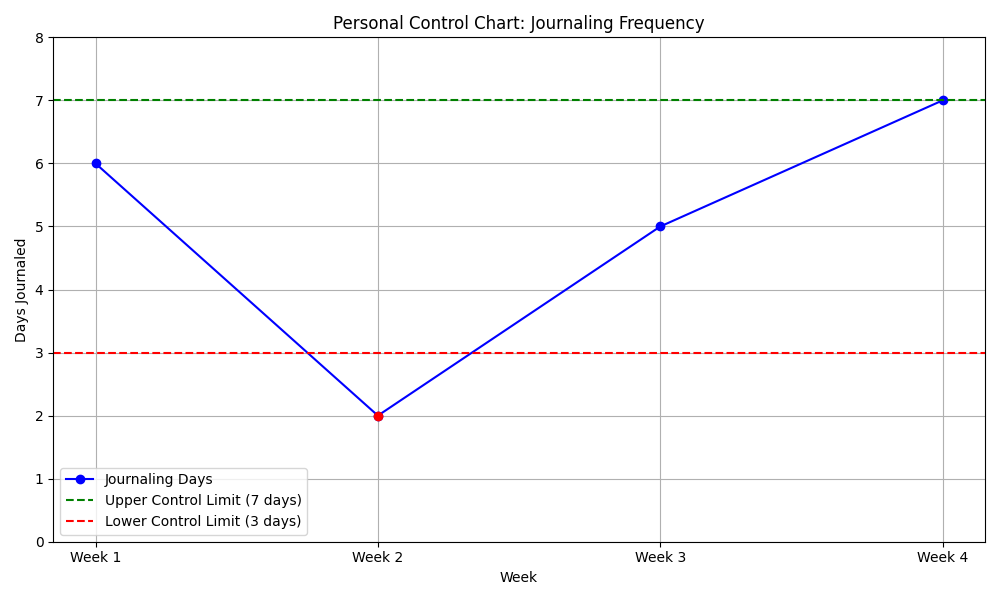🛠️ Building a Personal Control Plan
How to Sustain Personal Growth and Prevent Regression
In the world of continuous improvement, we know that sustaining gains is just as important as achieving them. The same holds true for personal growth. Whether you're building new habits, developing skills, or working on mindset shifts, the real challenge lies in maintaining progress and avoiding regression.
That’s where a Personal Control Plan comes in.
What Is a Personal Control Plan?
Borrowing from Lean Six Sigma, a control plan is a structured approach to monitor key metrics and ensure that improvements stick. In a personal context, it’s a dashboard or habit tracker designed to help you stay on course with your goals, detect early signs of backsliding, and make timely adjustments.
Think of it as your personal control chart—but instead of tracking defects or cycle times, you’re tracking habits, energy levels, mindset, or any metric that matters to your growth.
Why You Need One
Without a system to monitor progress, it’s easy to:
Lose momentum after initial success
Slip back into old habits
Miss early warning signs of burnout or disengagement
A personal control plan helps you stay intentional and data-driven about your development.
How to Build Your Personal Control Plan
〰️
How to Build Your Personal Control Plan 〰️
1. Define What You’re Tracking
Start by identifying the habits, behaviors, or outcomes that matter most to your growth. Examples:
Daily journaling
Weekly learning hours
Sleep quality
Emotional check-ins
Exercise frequency
2. Set Control Limits
Just like in a control chart, define your acceptable range. For example:
5–7 days/week of journaling = in control
3–4 days = warning zone
<3 days = out of control
This gives you a visual cue when things are drifting.
3. Visualize Your Data
Use a simple dashboard or tracker—digital or analog. Tools like Notion, Excel, or even a bullet journal work great. Plot your data over time to spot trends and patterns.
4. Establish Response Plans
What will you do if you fall below your control limits? Build in countermeasures:
Revisit your “why”
Adjust your routine
Ask for accountability
Take a break and reset
5. Review and Reflect
Schedule regular check-ins—weekly or monthly—to review your dashboard. Ask:
What’s working?
What’s slipping?
What needs to change?
Example: Personal Control Chart
Here’s a simple visual concept (inspired by Lean Six Sigma) to track journaling frequency over 4 weeks:
Final Thoughts
Personal growth isn’t a one-time project—it’s a continuous journey. By applying Lean Six Sigma thinking to your own development, you can create a system that not only drives progress but sustains it.
So, ask yourself:
What’s one habit or behavior you want to keep in control?
Start there. Build your plan. And let your data guide your growth.
